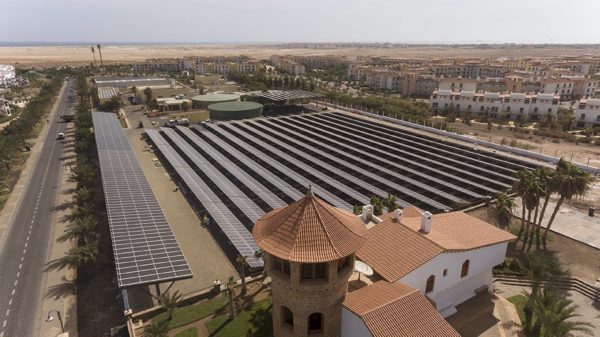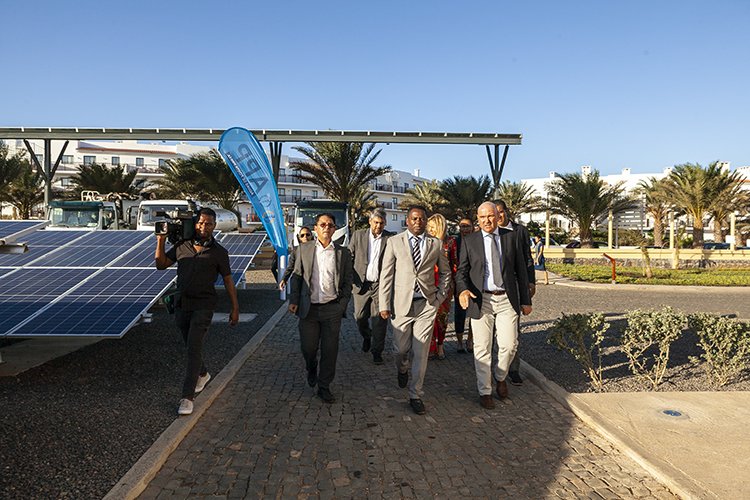Aguas de Ponta Preta (APP), the utility for the production and distribution of drinking water and electric power in the Island of Sal, of the Cape Verde archipelago, has commissioned a MW-sized solar power plant.
The Central Solar Fotovoltaica de Ponta Preta project was built at a cost of US$2.7 million with funds provided by local lender Caixa Económica de Cabo Verde and the utility.

Image: Aguas de Ponta Preta (APP)
The PV project has a total installed capacity of 1.318 MW, and is comprised of 3,880 modules and 49 inverters. Overall, it consists of a 972 kW ground-mounted system, and four rooftop arrays, which are spread across several APP’s buildings.
The installation was primarily built using REC's 345 Wp TwinPeack panels, although it also includes 400 BIPV glass bifacial monocrystalline panels installed on the roofs of the utility’s parking areas.
Expanding share
In other news, the Cape Verde government has approved a new plan, “Plano Director do sector Energético 2018-2040”, to expand the share of renewables in the islands’ electricity mix.
Under the new plan, the local government expects to reach a 30% share of renewables in 2025 and 50% in 2030. The previous plan envisaged a target of 100% renewables by 2021. “This was technically impossible,” said the country’s Minister of Culture Abraão Vicente.
“As a small island country and fragile from the environmental point of view, we need to be more resilient, so we have to make a serious commitment to renewable energies and the use of renewable endogenous resources, especially at the levels of wind and solar energy,” said Cape Verde’s Vice President, Olavo Correia at the commissioning ceremony of APP’s solar plant.
Currently, renewables account for about 18% of the archipelago’s power demand, with solar having a minimal share of 1%.
This content is protected by copyright and may not be reused. If you want to cooperate with us and would like to reuse some of our content, please contact: editors@pv-magazine.com.




Cape Verde is a volcanic hotspot archipelago, like Hawaii and the Canaries. Presumably the seabeds slopes steeply away from the shore, with very limited shallow water suitable for fixed offshore wind turbines. But these islands are ideal for floating wind.